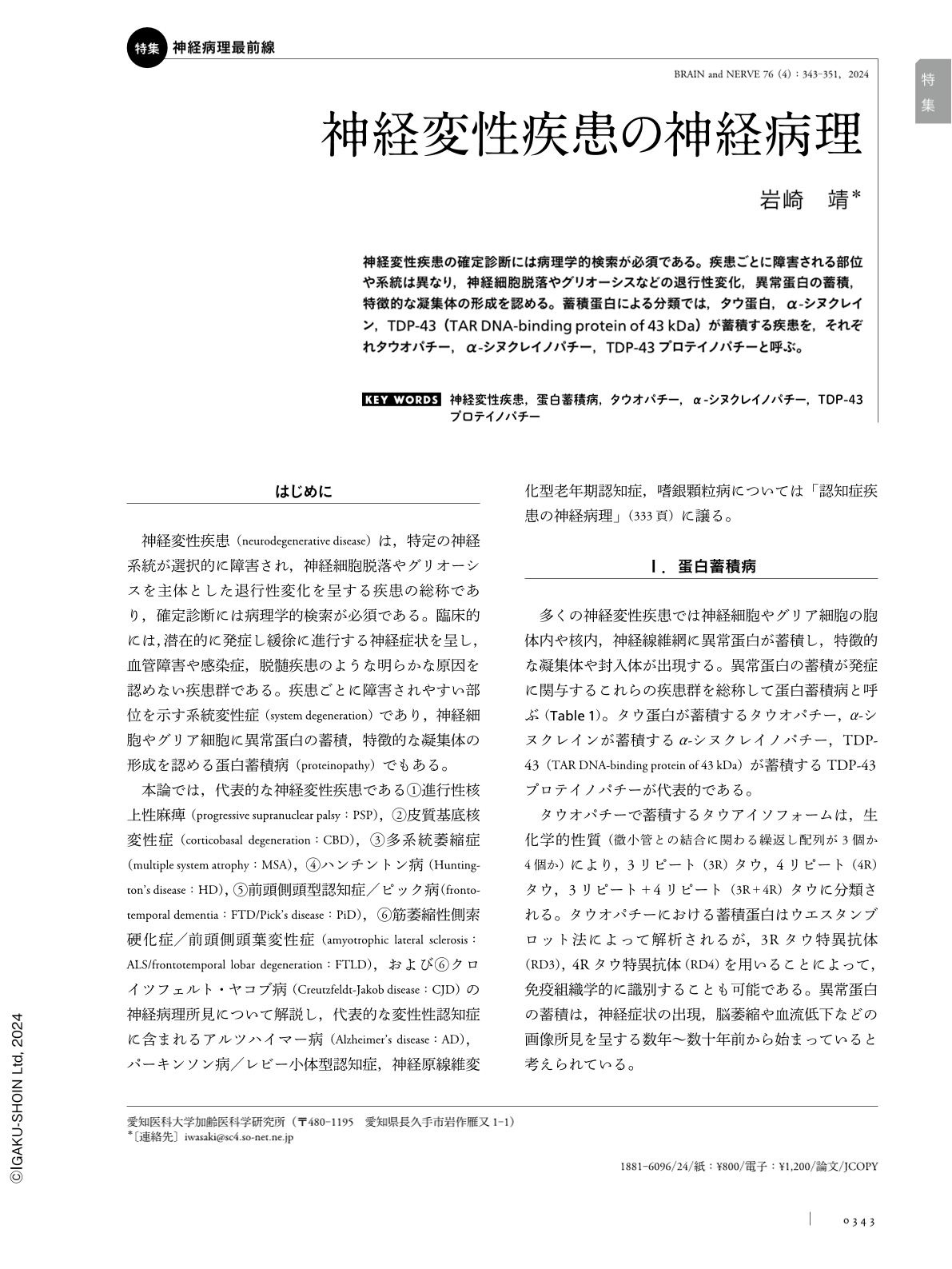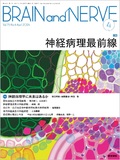Japanese
English
- 有料閲覧
- Abstract 文献概要
- 1ページ目 Look Inside
- 参考文献 Reference
神経変性疾患の確定診断には病理学的検索が必須である。疾患ごとに障害される部位や系統は異なり,神経細胞脱落やグリオーシスなどの退行性変化,異常蛋白の蓄積,特徴的な凝集体の形成を認める。蓄積蛋白による分類では,タウ蛋白,α-シヌクレイン,TDP-43(TAR DNA-binding protein of 43kDa)が蓄積する疾患を,それぞれタウオパチー,α-シヌクレイノパチー,TDP-43プロテイノパチーと呼ぶ。
Abstract
A definite diagnosis of neurodegenerative diseases is required for neuropathological examination during an autopsy. Each neurodegenerative disease has specific vulnerable regions and affected systems (system degeneration), and is typified by an accumulation of abnormal protein with the formation of characteristic morphological aggregates in the nerve and glial cells, called proteinopathy. The most common neurodegenerative diseases are tauopathy, such as progressive supranuclear palsy (PSP), corticobasal degeneration (CBD), and Pick's disease (PiD); α-synucleinopathy, including multiple system atrophy (MSA); and TAR DNA-binding protein of 43 kDa (TDP-43) proteinopathy, including amyotrophic lateral sclerosis (ALS) and frontotemporal lobar degeneration (FTLD). PSP and CBD show characteristic tau-positive astrocytic inclusions known as tufted astrocytes and astrocytic plaques, respectively. PiD shows tau-positive neuronal inclusions termed Pick bodies. MSA is characterized by α-synuclein-positive oligodendroglial inclusions, called glial cytoplasmic inclusions. ALS- and FTLD-TDP show TDP-43-positive neuronal inclusions, such as skein-like and round inclusions. Huntington's disease shows polyglutamine-positive neuronal inclusions, and Creutzfeldt-Jakob disease shows diffuse deposition of granular prions in the neuropil. The atypical proteins in these diseases have abnormal conformational properties. A comprehensive comparison of the clinical findings and neuropathological observations, including neuroanatomy and images acquired during life, is important to improve the sensitivity of clinical diagnosis.

Copyright © 2024, Igaku-Shoin Ltd. All rights reserved.


